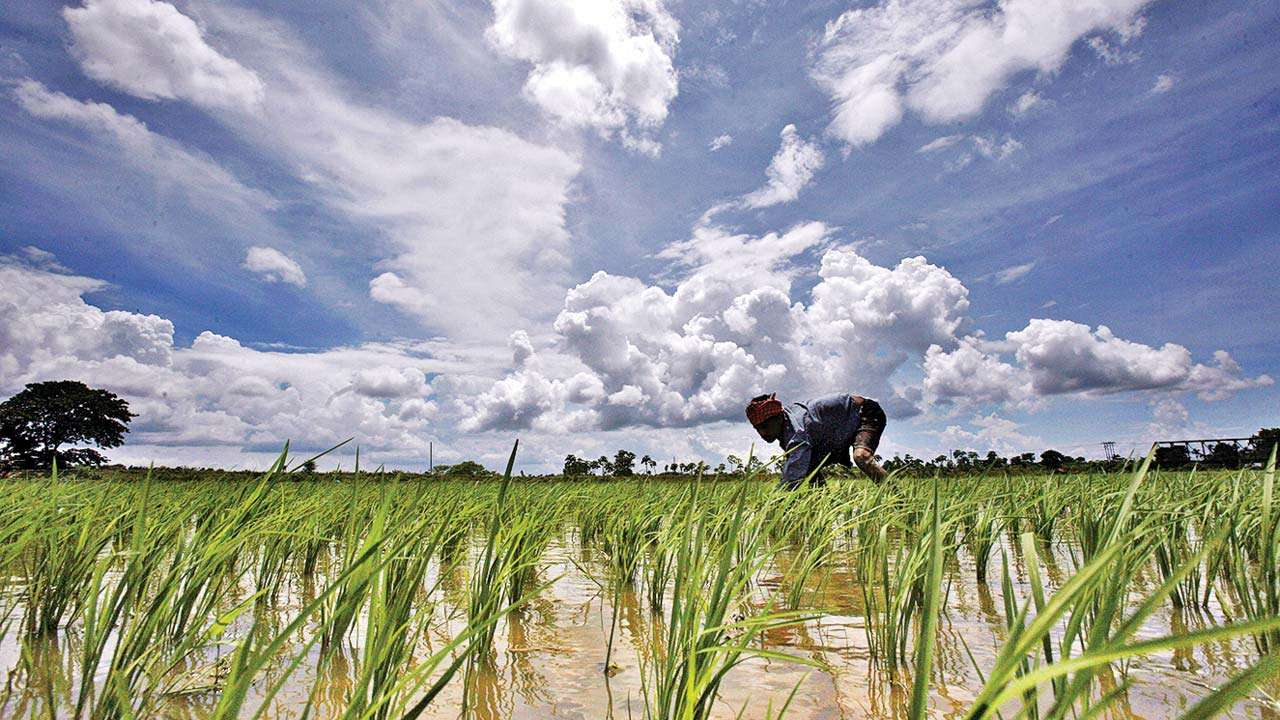 |
| farmland |
In the past 20 years, there have been only two instances (2004 and 2009) when rainfall was consistently in deficit over the first three months of the season. Additionally, in both these years, rainfall remained in deficit in the month of September also.
August monsoon outcome has been closer to IMD's forecast of 96% of LPA, as against more bearish expectations of private weather forecaster Skymet at 88% of the LPA.
While for the season as a whole, cumulative monsoon performance remains below normal, at 94% of LPA (as of September 2), the near normalcy of the headline conceals sharp variation seen in rainfall distribution, which stood out in the month of August. In an irony, excessive rains in Kerala lifted the monsoon's performance in southern region to a 7% surplus so far, the best among all regions of India. However, outside Kerala and coastal Andhra Pradesh, half the districts in South India are grappling with deficient rainfall.
Of the 47 districts in Tamil Nadu, N. I. Karnataka and Rayalseema put together, 30 have received 'deficient' rains and an additional 4 districts face a 'large deficit' so far.
IMD officials attribute the uneven distribution to peculiar features of this year's monsoon, wherein strong westerly currently brought copious rainfall to the west coast, including Kerala and coastal Karnataka, while low-pressure systems originating from the Bay of Bengal mainly affected central India, not making a big impact in the South.
The northeast is also facing a very dry season with a cumulative deficit of 24% so far in the season.
Rain over central India has been good so far at 1% deficit for the entire region, with the exception of Gujarat. The state's rainfall deficit at 19% is exacerbated by only 46% of total cropped area being under irrigation.
The deficit in northwest India currently stands at 4%, but the two well irrigated states of Haryana and Punjab reel under higher deficit at 23% and 15%, respectively.
On a sub-divisional basis, 27 of the 36 sub-divisions have received excess to normal rainfall, covering 76% of the country's area, for the cumulative season so far.
Sowing: Comparable to 2017
With the sowing season officially coming to an end, the total kharif sowing as of end August, stood at 1022.9 lakh ha, only a tad lower (-0.4%) compared to same period last year. Sowing of rice, oilseeds and sugarcane stand higher versus last year, whereas that of pulses, coarse cereals, jute and cotton modestly lower than last year. A recovery in rainfall in states of Chhattisgarh, Bihar, Assam and Uttar Pradesh have aided the paddy cultivation, especially the transplantation scenario.
Reservoirs status: Betters comparable levels over 2016 and 2017
Water storage availability in 91 major reservoirs of the country, as of August 30, stood at 69.2% of total capacity – a rise of 6.7% from previous week driven by replenishment of water levels in all regions. The current reservoir levels conform to 129% of storage capacity of last year – surpassing comparable level over 2016 and 2017 both.
Outlook for September: Late withdrawal expected
The El Niño southern oscillation is currently in neutral phase but according to both the US-based National Oceanic and Atmospheric Administration and the Australian Bureau of Meteorology (BOM), the ENSO could enter the El Niño as early as October. An earlier than anticipated onset of El Nino, could impinge on September rains, though the impact is likely to be more on the winter rains. However, IMD expects the process of monsoon withdrawal, which normally begins on September 1, to be delayed this year.
Conclusion
With sowing season coming to an end, a crop area comparable to last year is definitely a positive given the monsoon vagaries this year. With now only one more month to go in the season, rainfall activity in September will be important from the perspective of supporting yields of standing crops, replenishment of reservoir storage and soil moisture - both of which set the tone for sowing of rabi crop later in the year, which accounts for nearly 50% of annual agriculture output now.









No comments:
Post a Comment